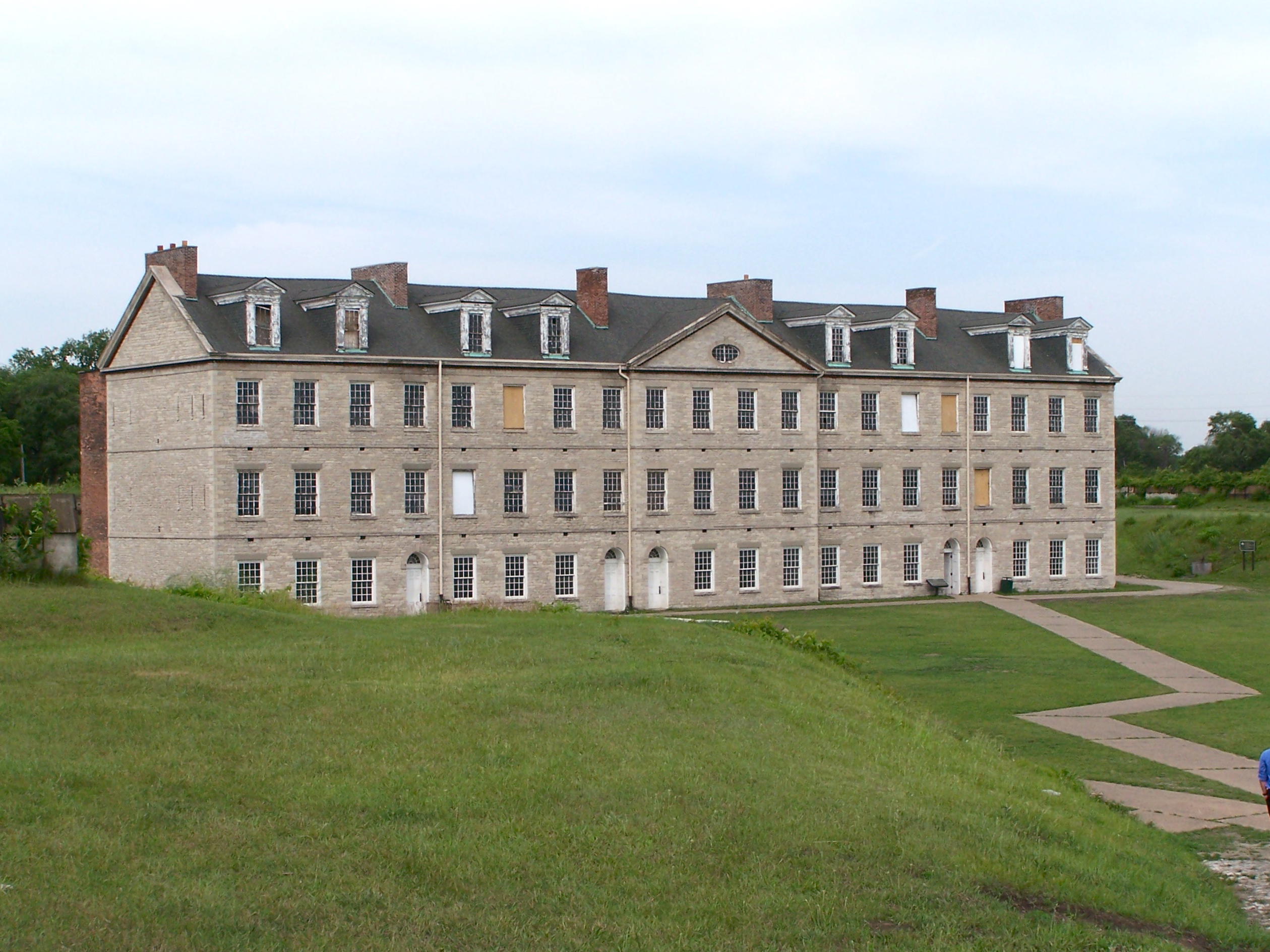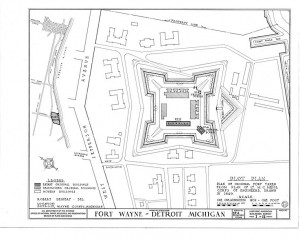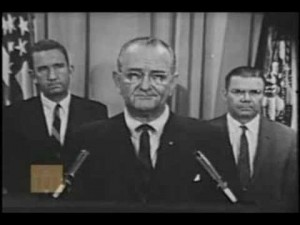
Before the Construction of Fort Wayne
The history of the future site of Fort Wayne extends much further back than the simple mapping and surveying of the area. Natives Americans had been living in the area for many years, the oldest records known show that the area was occupied as far back as 1000 A.D. nearly 800 years before the fort was constructed. Now this area was well used because of its location, being near a river and then the Great Lakes this area had a lot of to give early settlers such as Native Americans. A nearby river that could be used for irrigation as well as a direct connection to the lake making travel simple and allowing a wide selection of food gathering techniques. One ancient tribe used the areas next to the river as a sacred burial site. Members of the tribe were buried within the sand dunes in small tombs along with artifacts. The area was known to be host to several tribes none of which claim initial responsibility for the burial mounds. While the Native Americans most likely chose to make this place their home due to abundance of resources the colonists had other reasons for building the fort on Detroit River though the abundance of natural resources certainly helped with the decision.
The next large development wouldn’t happen until the War of 1812. This area was in the Northwest theater of the war. Where the American soldiers were to push into British held lands in Michigan and then push into Canada. One of the major mistakes of the American forces in this war was a huge lack of communication. The three theaters were supposed to happen at the same time, but due to logistics they took place at various times which allowed the British to be prepared on all fronts. Brig. Gen. William Hull was ordered to go to Detroit in the very beginning of the war. When he arrived, he did not know that fighting had already occurred along the South-Eastern border of Canada in which the American forces lost. Upon nearing Detroit, he and his men saw British workers setting up gun emplacements. He then ordered his men to open fire and began bombarding any British forces he could see. On July 5th Hull halted his bombardment upon reaching Detroit, his original orders were to capture and secure nearby areas, but these orders were changed and now he was to attack Fort Malden. After waiting till July 9th, he decided that he lacked the strength to attack Fort Malden. On July 12th he made a daring move to cross the river into Canada and take a town known as Sandwich. Unknown to him the Canadian forces in the town had previously evacuated because of the size of the Hull’s troops, so he was able to take the town peacefully. One month later General Brock would land at this site on his way to capture the town and fort of Detroit 3 miles to the east. The British would remain in control of the area for the next thirteen months. Three years later the Treaty of Well Springs would be signed at the future site of Fort Wayne. This treaty ended the conflict between the US and the eight Native American tribes that had gone to war with the US during the War of 1812.
Construction and Military Use of Fort Wayne
The land was finally surveyed in the year 1840. A fort was needed near the river to protect American lands and this place offered an advantage of being close to British Canada as well as being able to overlook the river. The fort got its name from General Anthony Wayne who fought during the Revolutionary War and took possession of Detroit from the British. “A five point star fort was slated to have the most up to date cannon capable of firing on enemy sailing vessels and the Canadian shore.” (Historic Fort Wayne Coalition, ¶1) This fort would be the third built in Detroit but the first built by Americans. The first fort, Fort Pontchartran, was built by the French in 1701 shortly after Antoine Cadillac’s landing, this fort was later surrendered to the British in 1760. The British then built their own fort several years later named Fort Lernoult. This fort was then taken over by the Americans once the US took over Detroit, and the fort was

renamed to Fort Shelby. Fort Shelby, however fell into disrepair following the War of 1812 and now Fort Wayne was to be a replacement in response to increased tensions along the Canadian border. The fort saw completion in 1851 but did not receive its gun emplacements. The US had signed a treaty with Great Britain creating a diplomatic solution to all territorial disputes in the area. Now that the threat was gone, and tensions had eased there was no reason to set-up arms at the fort. At this time, it became a troop garrison but wouldn’t see much use until the Civil War broke out.
Though Fort Wayne wasn’t on the front lines of any war the US participated in after the War of 1812 the fort did see use in the following years. Shortly after the start of the Civil War the Michigan 1st Regiment Infantry, a three-month volunteer unit, were mustered into service. These troops were placed within Willcox’s brigade and saw action during the first Battle of Bull Run which was a loss for Union troops. The fort was also recovery area for veterans of the war put out of service by their injuries. The fort saw similar use in the late 1800s during the Spanish-American War, this trend then continued into World War I.
During World War I the fort saw some additional use. While there was the usual mustering of men and training of units to send overseas once the US had entered the war we now needed places to store supplies created for the war effort. Before our direct involvement arms and supplies were sent to the Allies and the fort served as a great staging ground for such things with its proximity to the biggest industrial city in the US at the time with access to water ways that could connect to the Atlantic Ocean. The fort received larger warehouses to store these supplies until they could be shipped out overseas. The fort also had a slightly darker use during and just after WWI. The first Red Scare stuck during the early 1900s. This fear of communism was strong in the US at this time and even more so during the second scare following WWII. Those that found themselves under the investigation of being a communist could end up in the Fort Wayne detention center. Even those that had been found to be in the country illegally in the Detroit area were held in the fort’s detention center until they could be interrogated.
Use of the Fort Wayne didn’t change much between WWI and WWII. The fort was still used in mustering troops together and now even began taking in those who had been selected through the Selective Service Act and training these draftees. Detroit was still a powerhouse in automotive industry and after the US entered a state of “total war”, it began pouring out tanks and planes for the war effort. The ware houses around Fort Wayne were once again expanded to allow storage of these vehicles till they could sent out. It is estimated that thousands of vehicles were tested and processed by Fort Wayne. The fort’s detention centers still saw use in WWII. After the African campaigns made by the US Italian POWs were sent to the detention centers in Fort Wayne and remained there for the rest of the war. Following WWII, in May of 1949 the old star formation fort’s title was transferred to the City of Detroit with the stipulation that it become a historical monument. Troops remained garrisoned in the buildings not connected to the old fort and were mobilized during both the Vietnam and Korean Wars.
Non-Military use and the status of the fort
Fort Wayne saw some use outside of a staging ground for new troops during the late 1900s. By the 1960s the Civil Rights Movement was in full swing, African-American communities were pushing hard for social reforms. Tensions were at an all-time high in Detroit, white mobs were using force to keep segregation in order and were attacking homes that were newly purchased by black families. On Sunday July 23rd, 1967 after police had raided an illegal bar, patrons and observers in the street fought back and the confrontation exploded in one the largest riots in US history. After Detroit police lost control of the situation Governor Romney sent in the National Guard and President Johnson sent in two Airborne Divisions the 82nd and 101st. Lyndon Johnson was quoted saying “Their initial report was that it then appeared that the situation might be controlled without bringing the Federal troops … At approximately 10:30 this evening, Mr. Vance and

General Throckmorton reported to me by telephone that it was the then unanimous opinion of all the State and Federal officials who were in consultation—including Governor Romney, Mr. Vance, General Throckmorton, the mayor, and others—that the situation had developed in such a way in the few intervening hours as to make the use of Federal troops to augment the police and Michigan National Guard imperative.” (Lyndon Johnston, Address to the Nation, 24 July, 1967) Days into the riot papers read “Mobs Burn and Loot 800 Stores; Troops Move In”(Detroit Free Press, 24 July 1967) The size of destruction after the five-day riot was massive with thousands arrested, a few thousand buildings destroyed, injured people nearing 1200, and the death toll at 43. Since the ceasefire halting the conflict of the Korean War the fort was not full of troops and supplies at this time, so it became home to some of those displaced during the massive riot.
Sites around Fort Wayne were known to be burial mounds before the site was surveyed for construction in 1840. French settlers were most likely the first to know this having settled around the Great Lakes before British Colonists and after the Revolution, American settlers. There are six known mounds that existed near the site of Fort Wayne and near the city of Detroit. The old fort, the five-point star shaped fort, was built upon one of these burial mounds and another was located nearby. In 1837 John T. Blois lead the excavations of the Central Mound, the one located on the future site of the old fort. There he found skeletal remains mixed with arrowheads and old stone tools. The sites appeared to be like burial mounds found in other areas such as Ohio. The Fort Wayne Mound was located near the officer’s quarters, because of this it was protected from excavation and real estate developers once they began moving into the area. This mound was excavated in 1875 when Ethnologist Henry Gillman received permission from the War Department to dig in the area. He found the usual skeletal remains and ancient tools. A clay urn was also found and believed to hold human cremated remains. Excavations would continue in the surrounding areas later in the 1940s by a local aboriginal research club, who would find similar artifacts.
Today Fort Wayne is owned by the Historic Fort Wayne Coalition and the City of Detroit Recreation Department. Although the old fort was handed over to the city in 1949 it took many years for the entire grounds to be given to the city. Troops were garrisoned in the surrounding buildings until at least 1955 when several AA guns were placed around the fort during the Cold War. Some of the buildings were then used to provide shelter for those displaced during the 1967 riot. Slowly the buildings were all turned over to the city of Detroit, but the buildings soon fell into disrepair due to lack of funding and the fort was closed to the public for almost fourteen years from 1992-2006. In 2004 the Historic Fort Wayne Coalition was formed by locals that wanted to preserve Fort Wayne. They have so far helped maintain and restore the old buildings back to their original glory. Foundations like the Kresge Foundation have pledged money to help “redevelop the underused riverfront complex.” (The Detroit News, ¶2) They now hold events at the fort such as reenactments of drills during the different conflict periods of the US to show how Fort Wayne would’ve looked back then. The fort remains a historical monument and with the help of several Detroit historical societies is a place of learning for those who choose to visit.
Works Cited
- Newman, Stacey. “Encyclopedia Of Detroit.” Detroit Historical Society – Where the Past Is Present
- Szewczyk, Paul. “The Mound Builders.” Detroit Urbanism, 21 Dec. 2015
- “The War of 1812.” Occupation of Sandwich, www.mywarof1812.com/battles/120712-sandwich.html.
- “Mobs Burn and Loot 800 Stores; Troops Move In; Emergency Is On.” Detroit Free Press, 24 July 1967, pp. 1–1.
- Conway, James. “Detroit’s Star Fort with a Mission.” Historical Insight on Detroit’s Fort Wayne, Historic Fort Wayne Coalition, www.historicfortwaynecoalition.com/historical_insights.html.
- “Negro Leaders Plead for ‘a Safe City’.” Detroit Free Press, 24 July 1967, pp. 1–1.
- Johnson, Lyndon. “Address After Ordering Federal Troops to Detroit, Michigan.” White House. Washington DC. 24 July 1967. Speech.
- Karoub, Jeff. “Detroit’s Historic Fort Wayne Has Eye on Past, Future.” Detroit News, AP, 2 Jan. 2017, www.detroitnews.com/story/news/local/wayne-county/2017/01/02/detroits-historic-fort-wayne-eye-past-future/96088052/.

